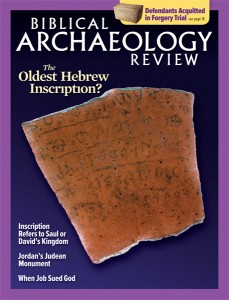The Bible has been translated into more than 2,000 modern languages. Only one has been a matter of controversy in Israel—a recent translation into modern Hebrew.
According to an article in Hadassah magazine, the new translation has been called scandalous, pernicious and even fraudulent. Some fear that if this “translation” is used in schools, the children will grow estranged from Biblical language.
The translation’s defenders claim that Israelis speak Israeli rather than Hebrew. Gil’ad Zuckermann, a professor of linguistics, maintains that modern Israeli Hebrew is a hybrid of Hebrew, Yiddish, Russian, Polish, Romanian and other languages.
In a Jerusalem Post article Zuckermann asks: “How many Israelis know that an egla meshulleshet [Genesis 15:9] is not a triangular cow but ‘a heifer of three years old’? If they studied [the new translation] the RAM Bible, they would know because it is translated as such: egla bat shalosh.”
Another example Zuckermann cites: “Most Israelis misunderstand yeled sha’ashuim [Jeremiah 31:20] as ‘playboy’ rather than ‘pleasant child.’”
The new modern Hebrew “translation” is the result of a four-and-a-half-year effort by 90-year-old kibbutznik Avraham Ahuvia, a retired Bible teacher. What he did, according to publisher Rafi Mozes of Reches Educational Projects, was “to mediate between the Biblical language and the Hebrew spoken today.”
The King James translation of the Bible begins this way: “In the beginning, God created the heaven and the earth.” Ahuvia translates this as “At the beginning of creation, when God created the world,” ending with a comma leading into the next verse.
Already a library member? Log in here.
Institution user? Log in with your IP address.

